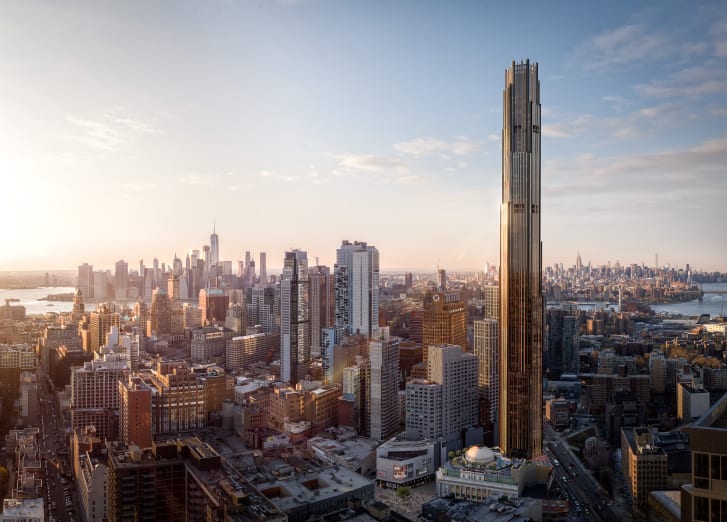Ed Sheeran’s $12M Brooklyn Investment Showcases Celebrity Preference For ‘Try-Before-You-Buy’ Real Estate Strategy
Grammy winner’s Pierhouse purchase reflects growing trend among high-net-worth individuals seeking low-risk property investments
Global superstar Ed Sheeran has closed on a nearly $12 million waterfront condominium in Brooklyn Heights, marking the culmination of a calculated two-year real estate strategy that began with one of New York’s most expensive rental agreements.
The Grammy-winning artist and his wife, Cherry Seaborn, acquired the approximately 3,400-square-foot unit at the prestigious Pierhouse development through Patrick Walker LLP, a UK-based entity registered to the couple. The off-market transaction, which appeared in city records this week, represents a sophisticated approach to luxury real estate acquisition increasingly favored by ultra-high-net-worth individuals.
From Record-Breaking Renter to Strategic Owner
Sheeran’s path to ownership began in 2023 when he signed Brooklyn’s most expensive rental contract of that year, paying $36,000 monthly for a different unit within the same building. This “test drive” period allowed the British musician to evaluate both the property and neighborhood before committing to a substantial purchase—a strategy that has gained traction among celebrity investors seeking to minimize acquisition risk.
The artist’s former rental unit, designated S405, has since been leased to a professional athlete and recently returned to market at an increased rate of $38,000 per month, demonstrating the continued strength of Brooklyn Heights’ luxury rental market.
A Premium Real Estate Ecosystem
The Pierhouse condominium, developed by Toll Brothers City Living in partnership with Starwood Capital Group, launched sales in 2014 and has evolved into a premier destination for celebrity residents. The 100-unit waterfront complex has attracted notable figures including rapper Kendrick Lamar, who purchased an $8.6 million duplex in 2023.
The building’s appeal extends beyond its celebrity cachet, offering institutional-grade amenities including dual fitness centers, a parking garage equipped with electric vehicle charging stations, and round-the-clock concierge services—features that align with the lifestyle expectations of today’s discerning luxury buyers.
Market Dynamics and Investment Performance
The transaction also highlights the robust performance of Brooklyn Heights’ luxury market. The unit was previously sold in 2017 for $6.1 million by real estate broker Jillian Woods and her husband Jordan Woods, representing an appreciation of approximately 97% over seven years—outpacing many traditional investment vehicles.
While Woods confirmed her role as the seller, she declined to provide additional commentary on the transaction, maintaining the discretion typical of high-profile real estate deals.
Strategic Implications for Celebrity Real Estate
Sheeran’s approach reflects a broader trend among entertainment industry professionals who are increasingly treating real estate as both lifestyle assets and strategic investments. The “try-before-you-buy” model allows celebrities to thoroughly evaluate properties while maintaining flexibility—particularly valuable for artists with demanding touring schedules and international commitments.
The off-market nature of the transaction also demonstrates the premium placed on privacy and discretion in celebrity real estate dealings, with many high-profile buyers willing to forgo potential savings from competitive bidding in exchange for confidentiality and streamlined processes.
As Brooklyn Heights continues to attract entertainment industry luminaries, Sheeran’s methodical approach to this acquisition may well serve as a blueprint for other celebrity real estate strategies in New York’s increasingly competitive luxury market.
Source: New York Post




